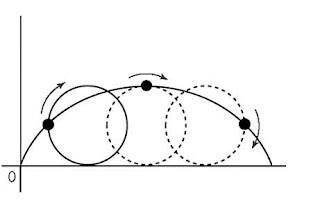Saturday, June 30, 2012
Saturday, June 23, 2012
Wednesday, June 20, 2012
Thursday, June 14, 2012
Wednesday, June 13, 2012
Monday, June 11, 2012
The Abbey of Saint-Denis
The first Gothic building:
The Abbey of Saint-Denis (in France)
The Abbey of Saint-Denis (in France)
| The ambulatory at the Abbey of Saint-Denis. |
Labels:
The Abbey of Saint-Denis
Sunday, June 10, 2012
Lower Paleolithic
The prehistoric period of human history which spans the time from around 2.5 million years ago when the first evidence of craft and use of stone tools by hominids appears in the current archaeological record, until around 300,000 years ago:
Lower Paleolithic
The Paleolithic Age, a prehistoric period of human history distinguished by the development of the most primitive stone tools discovered, contains three subdivisions:
Lower Paleolithic [2.5 million to 300,000 years ago]
Middle Paleolithic [300,000 to 30,000 years ago]
Upper Paleolithic (or Late Stone Age) [40,000 and 10,000 years ago]
Labels:
Lower Paleolithic
Saturday, June 9, 2012
Terra Amata
The earliest known structures built by humans are at:
Terra Amata
Terra Amata is an archeological site in southern France.
Terra Amata
Labels:
Terra Amata
Sexagesimal
A numeral system with sixty as its base:
Sexagesimal (or Sexigesimal)
Sexagesimal originated with the ancient Sumerians in the 3rd millennium BC, it was passed down to the ancient Babylonians, and it is still used — in a modified form — for measuring time, angles, and geographic coordinates (see Sexagesimal for more info).
Sexagesimal (or Sexigesimal)
Sexagesimal originated with the ancient Sumerians in the 3rd millennium BC, it was passed down to the ancient Babylonians, and it is still used — in a modified form — for measuring time, angles, and geographic coordinates (see Sexagesimal for more info).
Labels:
Sexagesimal,
Sexigesimal
Sunday, June 3, 2012
Terrestrial Planet
A planet that is composed primarily of silicate rocks or metals:
Terrestrial Planet
Terrestrial Planet
Labels:
Terrestrial Planet
Subscribe to:
Posts (Atom)
